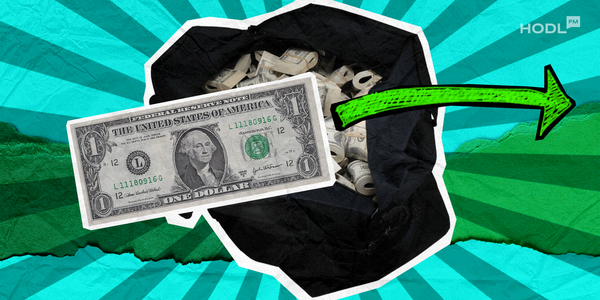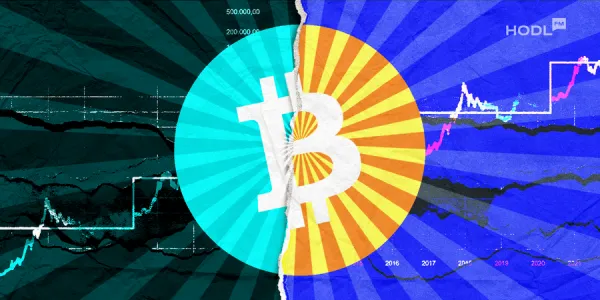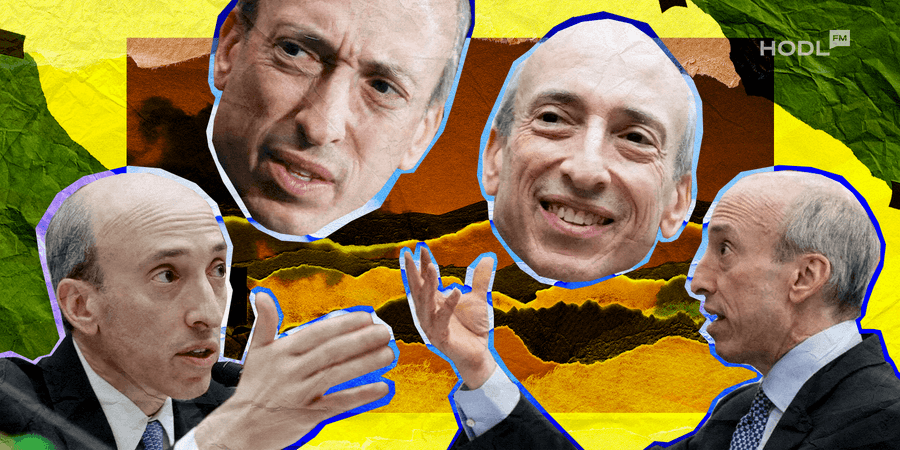Bitcoin’s journey continues to resemble a wild amusement park ride, and the latest twist comes courtesy of President Trump’s sweeping trade tariffs. With Bitcoin currently trading around $82,357, fresh analysis by Charles Edwards, founder of quantitative Bitcoin and digital asset fund Capriole Investments, warns that these tariffs could force the crypto giant into “very high risk” territory—potentially sending it hurtling down to 71,000. Strap in, because the road ahead appears bumpy.
Consider this as tariffs come in higher than expected.
— Charles Edwards (@caprioleio) April 3, 2025
The Phily Fed Business Outlook survey is showing expectations today comparable to 2000, 2008 and 2022.
How long until the Powell printer starts humming?
Discussed in @capriole_fund's update last week. pic.twitter.com/HNLJ8hgyWn
Tariff Turbulence and Market Mayhem
The saga began on April 2, when President Trump announced worldwide reciprocal trade tariffs. Bitcoin reacted dramatically, falling as much as 8.5% in one day while the S&P 500, in a surprising contrast, managed to close 0.7% higher. According to Edwards’ analysis, these “higher than expected” tariffs have injected an unsettling dose of uncertainty into the U.S. business outlook—a sentiment echoed by the Philadelphia Fed Business Outlook Survey (BOS). In fact, BOS ratings have dipped below 15 for the first time since early 2024, a reading reminiscent of market conditions last seen in 2000, 2008, and 2022.
🚨 @POTUS signs an Executive Order instituting reciprocal tariffs on countries throughout the world.
— Rapid Response 47 (@RapidResponse47) April 2, 2025
It's LIBERATION DAY in America! pic.twitter.com/p7UnfE617B
The impact is clear: as business confidence wanes, Bitcoin’s price is being pressured downward. Edwards noted, “If tariffs climb even higher than expected, the risk of Bitcoin falling to the $71K zone increases dramatically.” This level is crucial; a breach here could trigger a major sell-off, although there’s also speculation that a dip into the $71K range might eventually spark a sizable bounce.
Support and Resistance
While the market now flickers between hope and panic, technical indicators add more drama to this unfolding saga. According to Capriole’s market update, a key level on the upside sits at $91,000. Edwards argues that “all else equal, a daily close above $91K would be a strong bullish reclaim signal.” But for now, Bitcoin’s journey seems perilously balanced. Should the downward pressure persist, experts forecast that the crypto king could slide through its critical $80,000 support level and edge closer to $76,741—a grim prospect that has sent shivers down investors’ spines.
Adding to the tension, Bitcoin’s price initially surged to $88,500 earlier before retreating back to roughly $82,876. In the aftermath, slight recoveries were observed; Bitcoin managed a modest rebound of 0.8% to $83,205, and Ether, which dropped over 6% from $1,934 to $1,797 after tariffs hit, clawed back 1.2% to settle at $1,810. Yet these recoveries, while welcome, do little to ease the overall bearish sentiment fostered by uncertainty on Wall Street.
Global Responses and Broader Market Ripples
The impact of these tariffs isn’t confined to just the crypto arena. The S&P 500 suffered huge blows—trading resource The Kobeissi Letter revealed that the index erased over $2 trillion in market cap, working out to nearly 125 billion per minute. This spectacular wipeout contrasts sharply with the modest but volatile performance of Bitcoin and other digital assets.
Industry voices are divided. Rachael Lucas, a crypto analyst at BTC Markets, observed that the initial surge in trading volume—up 46% on their platform as local traders rushed to reposition—was a classic case of “uncertainty relief.” However, once the full details of the tariff escalations, including rates of 10% on nearly all trading partners and even higher rates for some (with China at 34%, the European Union at 20%, and Japan at 24%), became clear, panic selling kicked in. Lucas warned that if retaliatory tariffs from regions like China or the EU are magnified, this could trigger another round of panic selling.
All jokes aside, you will likely be liberated from your portfolio if you attempt to trade the upcoming volatility for the next few hours.
— Daan Crypto Trades (@DaanCrypto) April 2, 2025
If you don't have an edge, don't even try it. You'll get crushed. Markets won't move rationally and will be all over the place as the market…
Meanwhile, U.S. Treasury Secretary Scott Bessent tried to calm international markets in an April 2 Bloomberg interview, urging U.S. trading partners to avoid adding further levies. Bessent suggested that the current tariffs might actually serve as a "ceiling" to market instability, providing much-needed certainty—a cue that when speculation recedes, institutional investors might seize the chance to capitalize on compressed valuations.
Related news: Hayes Predicts 110K Before a Dip to 76.5K for BTC
Volatility and Uncertainty Reign
Even as the crypto community grapples with extreme fear—evidenced by the Crypto Fear & Greed Index dropping to a score of 25—there remains a glimmer of cautious optimism. Market observer David Hernandez, a crypto investment specialist at 21Shares, noted that while the tariff rates were slightly higher than expected, the clarity the announcement brought could ultimately benefit the market in the long term.
In this tumultuous climate, the outlook for Bitcoin hangs in the balance. If it can break above resistance levels, like the critical $91K mark, a bullish turnaround might be imminent. Failing that, an extended period of sell-offs could push Bitcoin down toward 71K, where a significant bounce-back might eventually materialize. Investors are therefore advised to remain nimble, keeping a close watch on both macroeconomic signals and technical indicators.
FAQs
What does a Death Cross mean for Bitcoin?
- A Death Cross typically refers to a situation where the 50-day moving average falls below the 200-day moving average, signaling potential major price corrections.
Why could Bitcoin drop to $71K?
- The forecast is based on increased pressure from U.S. trade tariffs that have created a high-risk environment. If these tariffs worsen, experts believe Bitcoin could be forced down to around $71K.
How do trade tariffs affect cryptocurrencies?
- Trade tariffs often dampen business confidence and global liquidity, which in turn can lead to reduced investor confidence and downward pressure on asset prices, including cryptocurrencies.
What is the significance of the $91K level?
- A daily close above $91K is seen as a bullish signal, potentially marking a reversal in the current bearish momentum in Bitcoin’s price trend.
What are the potential ripple effects on other markets?
- The tariffs are causing significant volatility not only in crypto markets but also in traditional stock indices like the S&P 500, which experienced a dramatic loss in market capitalization.

Disclaimer: All materials on this site are for informational purposes only. None of the material should be interpreted as investment advice. Please note that despite the nature of much of the material created and hosted on this website, HODL FM is not a financial reference resource and the opinions of authors and other contributors are their own and should not be taken as financial advice. If you require advice of this sort, HODL FM strongly recommends contacting a qualified industry professional.




